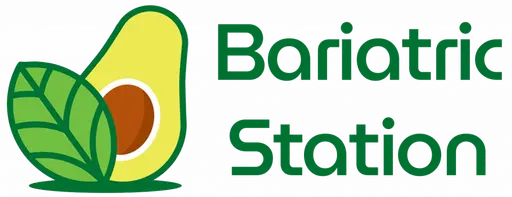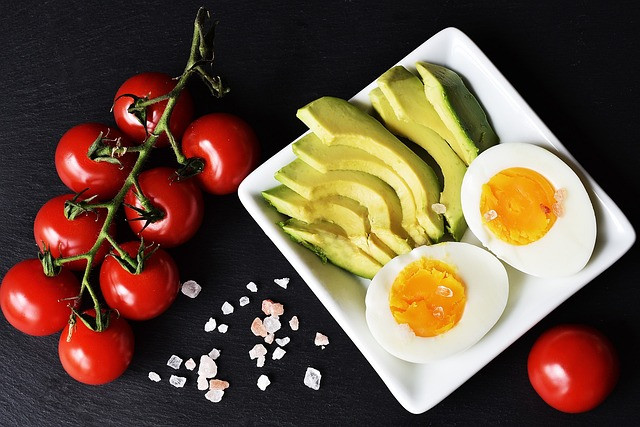What is the targeted ketogenic diet?
Most people associate the keto diet with a desire for weight loss or to keep off the pounds permanently. While research has shown that the keto diet is an effective weight reduction method, there’s little research backing muscle growth.
More specifically, there is little research that high intensity workouts can be paired with the keto diet without side effects. Take a look at this article to find out the physical side effects of the keto diet. You can also read about the psychological effects of the keto diet here.
So, the question is whether a targeted keto diet can fare better when it comes to building muscle, improving athletic performance, or even furthering weight loss. After all, it favors carb restriction and lowering carb consumption over providing energy stores with high carb sources.
Let’s find out.
What is a Targeted Ketogenic Diet (TKD)?

The Targeted Ketogenic Diet is a version of the keto diet which allows you to consume carbs during workout sessions. While the idea is that you still limit the carbs you take to 20-50 grams of carbs per day, they’re delivered when most needed. This will boost insulin levels in the blood for a short time.
This, in theory, delivers you with bursts of energy using extra glucose when you need them to “pump iron”. Thus, grams of carbohydrates are utilized when they’re most needed and they’re mostly expended for energy. None of them are stored in the body, and thus, aren’t turned into fat.
The approach in the targeted ketogenic diet is to space your grams of carbs intake about 15 minutes before or after the workout. This will assist with your workout intensity or recovery depending on your choice. It won’t affect the overall carb count in your body.
What Carbs Can You Consume in the Targeted Keto Diet?

Unlike in the normal keto diet which burns fat for fuel and centers on carb restriction, the TKD is different. It doesn’t center on blood sugar control. You don’t burn fat for energy. Instead, you focus on a specific energy boost which can help you with muscle growth and better workouts.
In it, you can consume high-carb foods and extra glucose during your workout on a daily basis. These can include fast acting pre-workout carbs like white rice, pasta, and rice cakes. They can also include pastries. This carbohydrate intake will help improve chances for better workouts along with boosting insulin levels. Even though the calories from carbohydrates will put you out of ketosis for a while, you can regain ketosis after the workout.
This doesn’t affect your overall carb count and doesn’t endanger your keto diet goals. This is because whatever complex carbs, simple carbs, or digestible carbs you consume, are all absorbed fast.
Of course, you shouldn’t consume these if you’re doing the normal keto diet. Check out this article for a list of carbs that you can consume if you’re on the normal keto diet where fat intake and protein intake are paramount.
Foods You Can Cosume During the Targeted Ketogenic Diet
Here are certain fast-acting carbs you can consume during the targeted keto diet:
- White Potato
- Sweet Potatoes
- Olive Oil
- Coconut Oil
What are the Health Benefits of a Targeted Ketogenic Diet?

The targeted ketogenic diet can generally help you achieve a better workout. With the enhanced physical performance, you can burn more calories per gram, create more muscle, and improve your overall health.
This involves eating a small number of fast-absorbing carbs which can be transferred fast in to the bloodstream. These pre-workout carbs can help you improve your workout intensity. You can do this during or before the intense workout you plan to do. You can even consume these fast-acting carbs afterwords if you plan on a better recovery. This can help top up your glycogen stores and fuel your session. It won’t affect the total carb count in your body.
However, there is a catch.Two actually. Without these 2 prerequisites, the Targeted Keto Diet may not work.
You Need to Be Fat Adapted for the Targeted Ketogenic Diet
You will need to be fat adapted to use this diet. This means that you’ll need to be used to slipping in and out of ketosis at a moment’s notice. This occurs because the ketogenic diet results in improved insulin sensitivity. Some studies put this at at an improved sensitivity of 75%. That is not achievable if you don’t put in the work.
This can’t happen at once. You will need to be in the keto diet process for several weeks before you can achieve this. Otherwise, the extra carbs you consume may as well be stored as body fat.
You Will Have to Be Glycogen Depleted
This means you will have to eat carbs when your glycogen levels are depleted. This is necessary since if your glycogen levels are already topped off, the glucose you consume will stay in your blood. Hence, instead of being stored in the muscle, these extra carbs will produce a spike in blood sugar levels and bring you out of the ketosis state.
One way you can deplete your glycogen stores is a glycogen depletion workout. There are several of these, however, you shouldn’t attempt too much at the same time to overwhelm yourself.
Here are some great high-intensity exercise routines you can use to achieve a glycogen depleted state:
- Crossfit: Crossfit incorporates several types of exercises in one program. A short bout of crossfit can do wonders for your glycogen stores. You can deplete them in a short amount of time.
- High Intensity Interval Training (HIIT): High Intensity Interval Training has been shown to deplete glycogen stores for a very specific reason. The high intensity results in an incomplete metabolism of glucose which results in lactate accumulation. This produces far fewer calories during digestion than a complete metabolic conversion while digesting pre-workout carbohydrates.
- Sprinting: Sprinting on a track for 15 minutes can put you in a state of high glucose dependency. Your body will ramp up the glycogen conversion to glucose and supply you with enough sugar for a few minutes after the sprint ends. This is a great way to deplete glycogen stores.
- Cardio (Marathons): Marathons or long runs usually deplete your glucose stores completely if you go on for extended periods. An intense exercise routine including a 1 hour jog or even a half-hour run can do wonders for depleting your glycogen stores. It usually helps if you’re already on the keto diet for some time since the body stores up as much glycogen as possible to utilize pre-workout carbohydrates when needed.
A combination of improved insulin sensitivity and depleted glycogen stores will help improve the effectiveness of the TKD. Otherwise, there is a danger of exercise fatigue setting in.
What is the Difference Between a Targeted Ketogenic Diet and a Cyclical Keto Diet?

There is debate on whether the cyclical keto diet (CKD) with carb cycling or targeted keto diet (TKD) is better for you when you’re working out.
The cyclical ketogenic diet is centered on a few cheat days per week which will help you ease into the keto diet. The opposite is true with decreased insulin resistance during the TKD. This has also been proven to help in avoiding the harsh side effects of keto including rashes and dehydration. Read more about the CKD and its benefits here.
With one or two days of high carb eating per week, the CKD allows the body to slowly adjust to deprivation of carb intakes. This is a good diet for active runners and bodybuilders and professional athletes. They are constantly burning many calories per gram in the form of glucose and stored fats. Hence, they need the extra energy once or twice a week. Their routine allows them to come back to ketosis fairly easily after eating carbs.
As for the TKD, this is a balanced approach which allows people to lose weight while still having energy stores for workouts. If you’re performing regular exercise including crossfit, sprinting or even strength training, TKD is great for you. Remember that prolonged exercise is not suited for the TKD diet.
However, you should know that the performance boost effect of TKD is individual. People have differences in glucose reserves and utilization and differences in metabolism and fat adaptation. Even ketone production is varied across different people. Hence, not everyone will perform better with TKD during workouts.
Is Targeted Ketogenic Diet Great for Strength Training or Resistance Training?

The consensus right now is against this. You will need a much greater protein intake to prepare for long-term strength training than TKD provides. Hence, a high-protein ketogenic diet is the answer. A standard keto diet or a cyclical ketogenic diet are both more suited to this to gain calories from protein. While it does burn more fat for fuel, the digestion of protein is still pretty effective.
The latest research says that resistance trained young men add more lean mass on keto than on high-carb diets. There are 2 basic prerequisites for muscle building during training sessions. The first is weight training and the other is sufficient protein. Whether you’re boosting your athletic performance or your overall physique, this is necessary. Burning fat calories and proteins is the combination needed for great muscle growth.
The strict keto diet can help you keep ketone levels high. It will produce more ketones like BHB, which actively spares lean muscle mass and help in protein synthesis with. You can read more about the ketone bodies produced during keto here.







